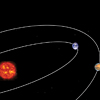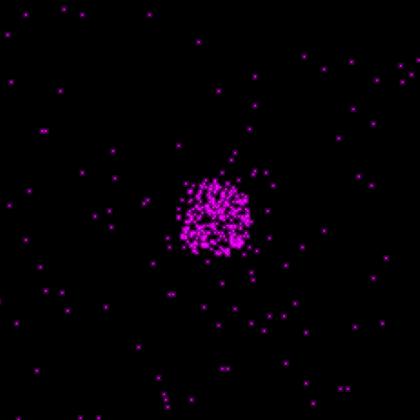Mars Glows In X-Rays
This remarkable Chandra image gave scientists their first look at X-rays from Mars. In the sparse upper atmosphere of Mars, about 120 (75 miles) kilometers above its surface, the observed X-rays are produced by fluorescent radiation from oxygen atoms.
X-radiation from the Sun impacts oxygen atoms, knock electrons out of the inner parts of their electron clouds, and excite the atoms to a higher energy level in the process. The atoms almost immediately return to their lower energy state and may emit a fluorescent X-ray in this process with an energy characteristic of the atom involved - oxygen in this case. A similar process involving ultraviolet light produces the visible light from fluorescent lamps.
The X-ray power detected from the Martian atmosphere is very small, amounting to only 4 megawatts, comparable to the X-ray power of about ten thousand medical X-ray machines. Chandra was scheduled to observe Mars when it was only 70 million kilometers from Earth, and also near the point in its orbit when it is closest to the Sun.
At the time of the Chandra observation, a huge dust storm developed on Mars that covered about one hemisphere, later to cover the entire planet. This hemisphere rotated out of view over the course of the 9-hour observation but no change was observed in the X-ray intensity, implying that the dust storm did not affect the upper atmosphere.
The astronomers also found evidence for a faint halo of X-rays that extends out to 7,000 kilometers above the surface of Mars. Scientists believe the X-rays are produced by collisions of ions racing away from the Sun (the solar wind) with oxygen and hydrogen atoms in the tenuous exosphere of Mars.
|
||||||||||||||||||||||





